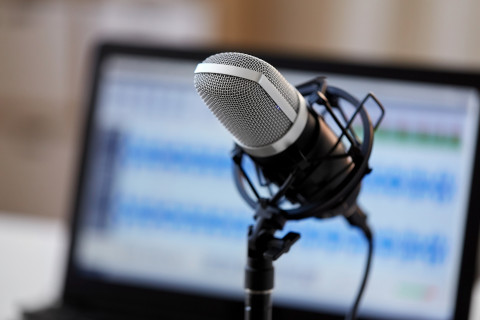This is the podcast text. You can find the link to the podcast after the text.
Marianne Mustonen:
You are listening to a podcast from the University of Eastern Finland, and I am Marianne Mustonen.
Agriculture is one of the greenhouse gas emission sources in Finland. Managing the water table level of peat soiled fields may be one solution to control the emissions. Last month we went to the foggy of the Northern Savonia, the countryside of Maaninka, to find out, how the experiments are done. We met there two nice researchers. Zheng Yu from our university and Saara Lind from the National Resources Institute Finland.
Saara Lind:
So, my name is Saara Lind, and I’m working as a researcher here at LUKE Maaninka. And today we are here at the Särkisuo site, where we have an experiment going on at the peat soil site, where we are studying the greenhouse gas exchange of peat soil under water level manipulation. We are doing this work in collaboration with the University of Eastern Finland, and with their professor Marja Maljanen, and we also have a PhD student here, Zheng Yu, who is doing a lot of the field work at the site. So our idea is that with different water tables, we could reduce the emissions of greenhouse gases that we have from the peat soils, while at the same time producing a good quality and a good amount of fodder. So, we are cultivating here a mixture of timothy and (mita fescue) for fodder production.
This is a grassland site, and we are using this fodder here to feed the deer calves at our Halola site. So, we are doing two different kinds of flux measurements here, for the greenhouse gas exchange. So, Zheng Yu is doing the manual measurements, and together with the University of Eastern Finland we are carrying out the measurement using the eddy covariance technique for the gas exchange. So, the eddy covariance technique is a (direct) and continuous measurement technique, that uses the vortical wind velocity and the concentration of the greenhouse gases and their covariance to calculate the greenhouse gas exchange. So, we do the measurements at the frequency of 10 Hz, and from that data, we produce the thirty-minute averages for the site. And there we can see whether the site is a sink or a source for the greenhouse gases.
Zheng Yu, please?
Zheng Yu:
Hello, this is Zheng Yu, and I’m a PhD student from the University of Eastern Finland. I had my Master’s Degree in the University of Eastern Finland, and I had my Master’s Thesis with Saara and Marja Maljanen, who are now my PhD supervisors. And I am investigating this water table level situation. I’m investigating the influence this water table level has on the greenhouse gas emission. At the same time, we also want to have better grass use here.
For my project, I have two parts of experiments. One is the field experiment. I do this greenhouse gas measurement manually, mainly the chamber measurements. I do this observation year-round, so that I can have an annual greenhouse gas balance, and against the use, I got other data. Apart from this field measurement, I also have a lab measurement. It’s a mesocosm study, I will take soil samples from the field and incubate them in the lab. Because it is difficult to control the water table level and the natural conditions. The mesocosm study aims to find out the optimal water table level, while the soil is in considerable use. Because it is a practical reason, without use it is difficult to implement the optimal water table level in Finland.
Saara Lind:
I think we still have an information gap on how to manage these peat soils that we are using for agricultural purposes. I think it’s important also in the future to continue these studies on how we can cultivate them in a climate-friendly way. There is still a lot that we can do and, now with the climate change and the effects of that on, for example, the weather conditions that we have. So, I think it’s very important to continue this research on how we can produce food under very variable weather conditions. For example, last summer we had quite a long period without any rain, and it was very warm. So, we still have to be able to produce food under those conditions. It would be interesting to study, if the agroforestry would increase the sustainability of the agriculture in the future, under the changing climate.
Marianne Mustonen:
How about you?
Zheng Yu:
Yeah, because this rising water table would be the most effective way to reduce greenhouse gas emissions, but at the same time, we need to consider the use from the grassland. If it’s possible to find a kind of a balance point, I’d say it’s quite practical in real implementation in the future. And I think there will be a very long way to go to figuring out, if we got this very optimal water table level, how can we put them into practise and how the soil, the grass, will react to these different water table levels. I think there are many topics.
Marianne Mustonen:
You were listening to a podcast from the University of Eastern Finland. I am Marianne Mustonen, and our guests were Zheng Yu and Saara Lind. You can find the full story on our university’s website. There are some photos and videos too, so you can see, what the field experiment looks like. Thank you for listening, and please, join us again.
